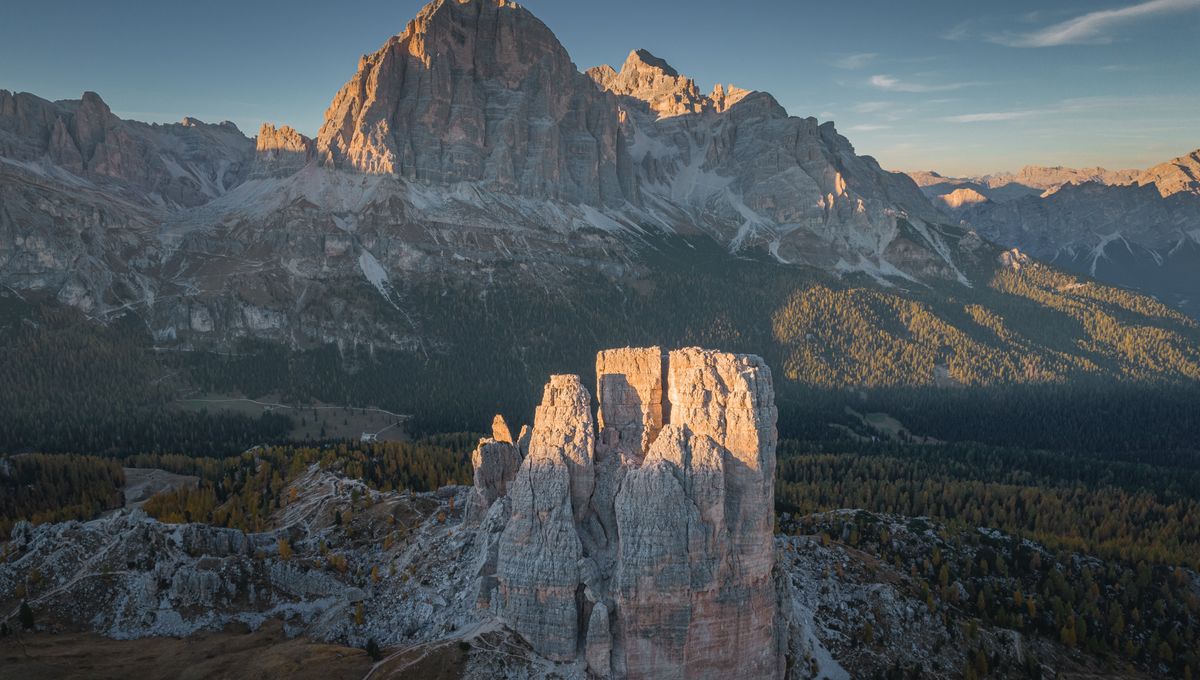
In the 1970s and 80s, geologists noticed unusual layers deposited in ancient rocks, dating to around 232-4 million years ago. Through investigative science, it revealed one of the most fascinating chapters in the history of Earth, defined by 2 million years of rainfall and the emergence of dinosaurs
In the Eastern Alps, one team investigated a layer of siliclastic sedimentation deposited in carbonate. Meanwhile, in the UK, geologist and forensic scientist Alastair Ruffell examined a layer of gray rock found inside the famous red stone found in the area.
Geologists have since confirmed that this was not an isolated phenomenon. Layers of similar age and composition have been uncovered in South America, China, and even as far as Australia, indicating that the shift to wetter conditions was truly global.
All of these findings point to one thing: around 232 million years ago, the Earth left a dry spell and it began to rain. A lot.
Given that the gray sandstone and siliclastic sediment was deposited over a long, long time, it was evidence that right at the beginning of the age of the dinosaurs when their numbers and diversity exploded, there was an unusually wet period lasting 1-2 million years.
In fact, since the discovery, there has been growing evidence that the wet period may have been the “trigger that enabled dinosaurs, and possibly the other members of the modern terrestrial fauna, to diversify and dominate the land”.
The period, known as the Carnian pluvial event, or even the Carnian crisis, has since been seen in rocks from around the world. The cause of the unusual amount of rainfall appears to be the result of a massive increase in humidity, possibly due to a gigantic volcanic eruption of the Wrangellia Large Igneous Province, running from south-central Alaska and along the coast of British Columbia.
“The eruptions peaked in the Carnian,” Jacopo Dal Corso, involved in research into the eruption, told Everything Dinosaur. “I was studying the geochemical signature of the eruptions a few years ago and identified some massive effects on the atmosphere worldwide. The eruptions were so huge, they pumped vast amounts of greenhouse gases like carbon dioxide and there were spikes of global warming”.
Pangea – the supercontinent on Earth at the time – was already prone to monsoons. They are caused when moisture-heavy air from the seas is blown towards land, where it cools and falls as heavy rains. As the seas became as warm as a hot tub, more moisture would have been above it, making for more monsoons and more heavy rainfall on land.
The humid, wet period was not great for life. One study published in the Journal of the Geological Society paints it as a time when “volcanic eruptions generate acid rain and greenhouse gases, which in turn lead to extinctions by shock warming, stripping of vegetation and soils on land, and ocean anoxia and acidification”.
Species were wiped out by the event. But after it was over, there were clear winners.
“In the wake of wide extinctions of plants and key herbivores on land, the dinosaurs were seemingly the main beneficiaries in the time of recovery, expanding rapidly in diversity, ecological impact (relative abundance) and regional distribution, from South America initially, to all continents,” the team wrote in their paper.
“It may have been one of the most important [rapid events] in the history of life in terms of its role in allowing not only the ‘age of dinosaurs’, but also the origins of most key clades that form the modern fauna of terrestrial tetrapods, namely the lissamphibians, turtles, crocodiles, lizards and mammals.”
An earlier version of this article was published in March 2023.
Source Link: Carnian Pluvial Event: It Rained For 2 Million Years — And It Changed Planet Earth Forever